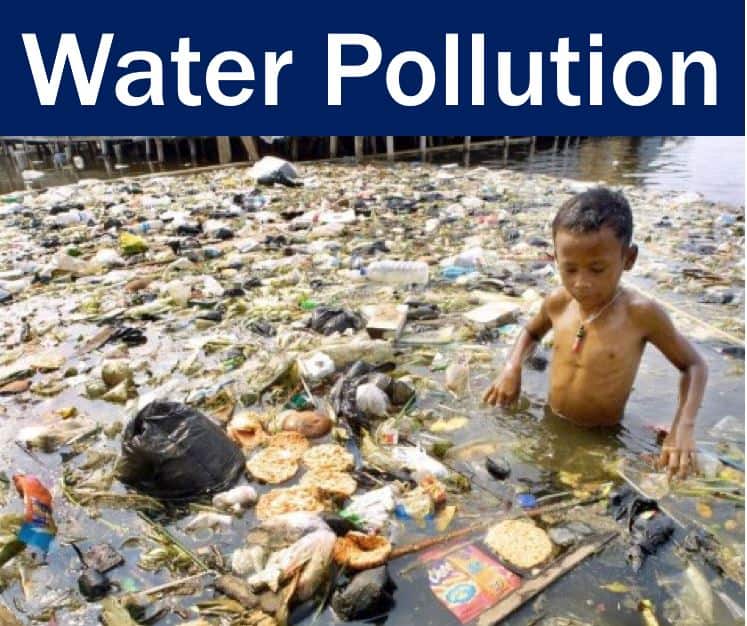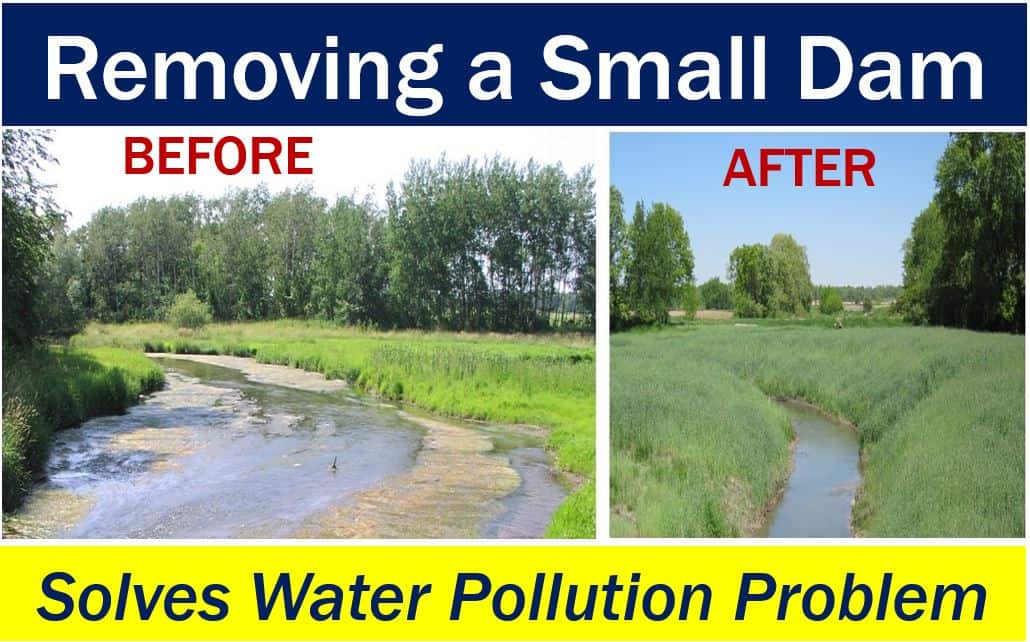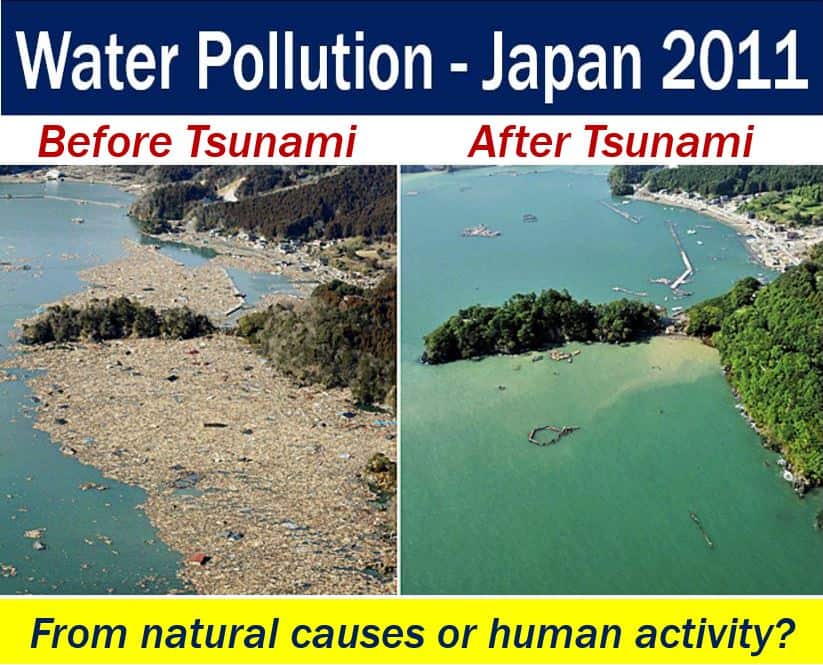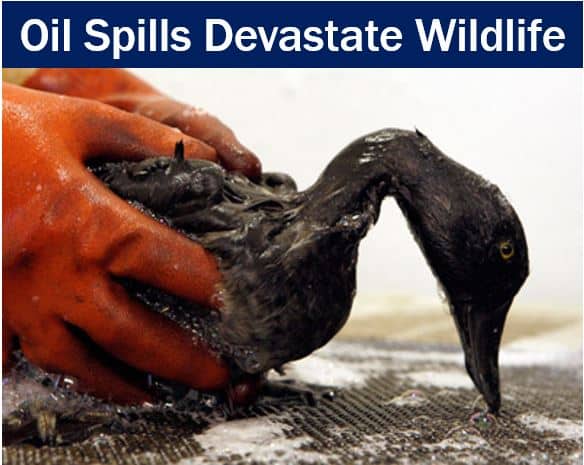Water Pollution refers to the contamination of lakes, oceans, rivers, aquifers, and groundwater. Unsurprisingly, in most cases today, water pollution is a result of human activity.
Water pollution refers to the presence in water of objectionable or harmful material. Concentrations of harmful material today are high enough to degrade the quality of the water measurably.
Water pollution occurs when we discharge pollutants indirectly or directly into water bodies. It becomes a problem when water treatment cannot get rid of the harmful compounds fast enough.
We call the harmful substances in water that get into our food ‘food contaminants.’
Pollution refers to anything in the environment that should not be there and may be harmful.
Air and water pollution
Consequently, water pollution is our second-most imperative environmental concern, after air pollution. Air pollution includes the release of particulates and harmful substances into the atmosphere.
The pollution of our waters is one of the consequences of uneconomic growth. Uneconomic growth refers to GDP growth that leads to more harm than good.

Water pollution has become a growing concern over the last one hundred years. We are disposing of more and more of our waste in our rivers, oceans, and lakes.
Not only is this growing water pollution damaging the environment, but it is also harming our food supply. Consequently, hundreds of millions of people across the world today cannot get clean drinking water.
Emerging pollutants, such as pharmaceuticals and personal care products, are increasingly being detected in aquatic environments, presenting new challenges for water treatment and pollution prevention.”
Seventy percent of our planet’s surface consists of water. It is a vital resource for humans, other animals, plants, and virtually all life forms on Earth.
Water pollution a major cause of death
Water pollution affects our drinking water, oceans, lakes, and rivers. In many developing nations, contaminated and dirty is a major cause of death.
The effect of water pollution is damaging to individual species and populations. Additionally, water pollution is destroying whole, natural biological communities.

Water pollution affects populations and entire functioning ecosystems that live in the waters.
The following comment comes from the World Wildlife Fund (WWF Global):
“Not only does this [water pollution] spell disaster for aquatic ecosystems, the pollutants also seep through and reach the groundwater, which might end up in our households as contaminated water we use in our daily activities, including drinking.”

Sources of water pollution
Two of the most common sources of water pollution are industrial waste discharge and city sewage. Both city sewage and industrial waste discharge are the results of human activity.
Indirect sources include contaminants that get into the water supply from groundwater and soils systems. Additionally, pollution rains down in water droplets from the atmosphere.
Chemicals released by cars, manufacturing, lawns, and farms are major contributors to water pollution. Yard fertilizers and pesticides run into storm drains and make their way into our lakes, rivers, and oceans. (US: yard fertilizers. UK: garden fertilizers)

The NSW Environment Protection Authority (EPA) in Australia breaks down water pollution sources into two categories; point source and diffuse source:
-
Point Source
This source refers to water pollution that comes from a discrete source. Examples include a drain or pipe flowing from industrial activity.
Point source uniquely affects waterways, because it occurs independently of flow conditions. It can harm a waterway when it is least able to accommodate the pollution. Waterways are most vulnerable during very dry conditions.
-
Diffuse Source
This is water pollution that arises from several different urban and rural land uses across a catchment, rather than one discrete point source.
Rainfall runoff is the main driver of diffuse source water pollution, particularly from storms. Contamination of aquifers and underground water systems may occur over long periods independently of rainfall. This contamination may be due to current or past land uses on the ground.
Clear water may not be clean
Clear water may appear clean to the naked eye. However; it has hidden pollutants that can harm human bodies as well as animals, plants and other organisms.
To determine how healthy water is, scientists and researchers often need to carry out special tests.
Polluted water must go through a filtration and removal process before it can become potable (drinkable). Water must be cleaned to make it sustainable for several animal species that inhabit it.
The following quote comes from WhaleFacts.org:
“Sadly the issue of water pollution is even more severe in third world countries where there is no way to properly dispose of poisonous chemicals/materials, and polluted water cannot easily be cleaned or treated.”
“In these countries, people often end up reusing polluted water which can lead to many of the issues described previously such as birth deformities, sickness, disease, and death.”
-
Microbeads
Microbeads are a common source of water pollution. They are the current focus of legislation in the world’s advanced economies. Microbeads are tiny microspheres, usually made of polyethylene, which are used in cosmetics. They are also used to make toothpaste, shower gels, and some other products we buy and use.
In 2016, the United Kingdom began introducing legislation outlawing the tiny plastic particles.
A report published in 2015 informed that our oceans had become dumping grounds for plastic debris. The report authors suggested that in 2010, coastal countries generated almost 275 million tons of plastic waste. Scientists estimate that up to 12.7 million tons of that total end up in our seas.
Recent studies have indicated a significant increase in pharmaceutical contaminants in water bodies, attributing to the growing concern over their potential impact on human health and aquatic life.
When our land becomes contaminated with pollutants we call it land pollution.
Types of pollution
There are many different types of pollution. Let’s take a look at some of them, their meanings, and how we can use them in a sentence:
-
Air Pollution
Contamination of the atmosphere by harmful chemicals or biological materials.
Example: “The industrial area has been suffering from severe air pollution due to emissions from factories.”
-
Noise Pollution
Excessive or disturbing sounds that disrupt the natural balance and potentially harm living organisms.
Example: “Residents complained that the noise pollution from the construction site was disrupting their daily lives.”
-
Light Pollution
Excessive or obtrusive artificial light that can have negative effects on humans, wildlife, and astronomical observations.
Example: “The city’s night sky is obscured by light pollution, making it difficult to see the stars.”
-
Soil Pollution
The presence of toxic chemicals, salts, radioactive materials, or disease-causing agents in soil at harmful concentrations.
Example: “Agricultural practices have led to increasing cases of soil pollution, affecting crop production and food safety.”
-
Plastic Pollution
Accumulation of plastic objects and particles in the Earth’s environment that adversely affects wildlife, wildlife habitat, and humans.
Example: “The beach cleanup event focused on reducing plastic pollution, which is harming marine life.”
-
Thermal Pollution
Harmful rise in the temperature of a natural body of water caused by human influence, such as industrial discharge of heated water.
Example: “The power plant has been criticized for contributing to thermal pollution in the nearby river.”
-
Visual Pollution
An aesthetic issue, referring to the impacts of pollution that impair one’s ability to enjoy a vista or view.
Example: “Billboards and overhead cables contribute to visual pollution in our cities.”
